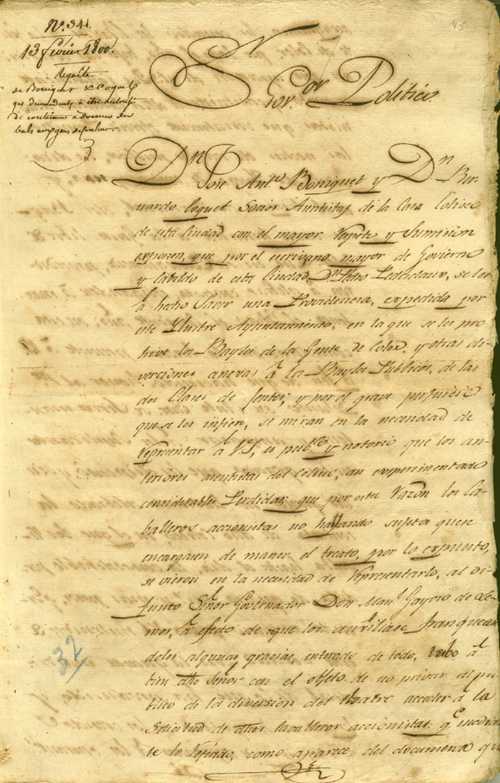
In April 1799, Jos‚ Antonio de Boniquet and Bernardo Coquet assumed the
lease of the St. Peter Street Theater, which was struggling financially, and asked
Governor Gayoso to allow them to underwrite the expense of running the theater by
holding public dances for free people of color in Coquet's ballroom on St. Philip Street.
Governor Gayoso agreed to allow them to hold their dances on Sunday nights until the
carnival season on the condition that no slaves would be admitted.
In February of the next year, the Spanish attorney general, Pedro Barran, went before
the Cabildo and asked that the permit granted to Coquet and Boniquet be revoked,
charging that ballroom was admitting slaves. The Cabildo resolved that dances for free
people of color would be permitted henceforth only in private homes and nullified the
governor's permit. Immediately, the lessees took action to revoke the council's decree.
In the petition shown here, dated February 13, 1800, Coquet and Boniquet ask the
provisional governor, Nicholas Maria Vidal, to honor the permit previously issued by
Governor Gayoso (who had since died) and to renew it for another year. Once again,
they were successful, and the balls for free people of color continued in St. Philip Street
(and slaves probably continued to gain unofficial admission).
Balls attained their highest
frequency during the carnival season, a stretch of from five to eight weeks between
Twelfth Night and Shrove Tuesday. The idea was to get in as much fun as possible
before Lent, and in New Orleans fun meant dancing.